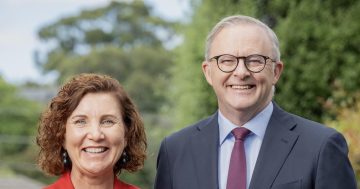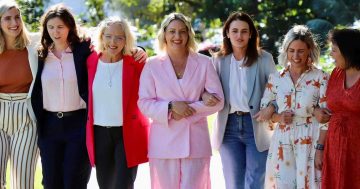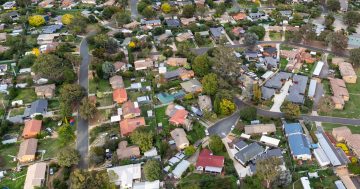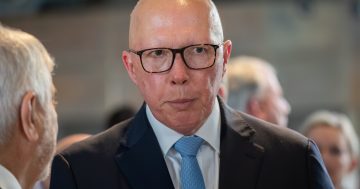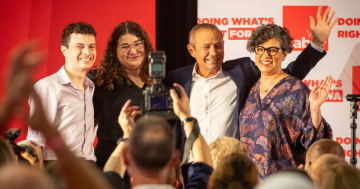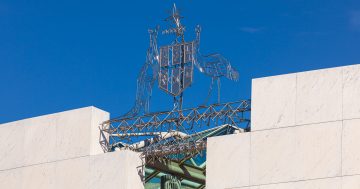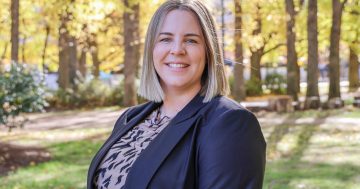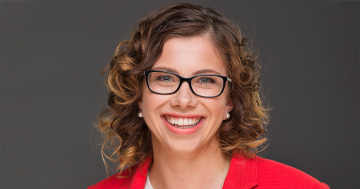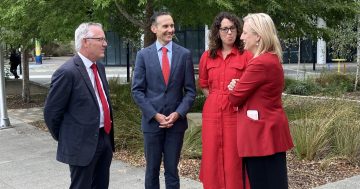With women storming the 2022 federal election in number too big to ignore, Camilla Nelson* looks at what the incoming Labor government has pledged on gender.
 Women were everywhere and nowhere in the 2022 federal election, writes Camilla Nelson, University of Notre Dame Australia
Women were everywhere and nowhere in the 2022 federal election, writes Camilla Nelson, University of Notre Dame Australia
The message from the weekend’s vote was that the things that really matter to women and their communities matter at the ballot box, too.
Even if they were not part of the conversations the major parties were having.
We know that women have been trending away from the Liberal Party, for almost 40 years.
And we also know polls suggest women care about climate change more than men and of course we know they care about being respected and living in safety.
Big wins across the country
The most conspicuous winners on Saturday night were the so-called teal candidates.
From Zoe Daniel and Monique Ryan in Melbourne to Zali Stegall, Sophie Scamps, Kylea Tink and Allegra Spender in Sydney and Kate Chaney in Perth, politics-as-usual is being revolutionised by independent women.
Here we have seen a swathe of well-credentialed professional women secure stunning victories in metropolitan seats that have historically provided the Liberal Party with its power base.
This is a trend started by former independent Cathy McGowan in 2013 in Indi.
McGowan, who has continued to advise the current crop of candidates, wanted local members who actually listened to their constituents.
The teals made gender equality one of their top priorities, also situating it within an interlinked set of policy positions including anti-corruption and climate change.
And they have been rewarded with history-making wins.
Their impact on Australia’s political scene is already seismic and we’re barely 24 hours post-election.
Not just teals
But we also saw significant gains from women in other parts of the political spectrum.
Liberal MP Bridget Archer held her seat against the tide, having stood up for integrity issues and LGBTIQ+ rights during the last parliament.
Also in Tasmania, Jacqui Lambie increased her Senate team to two, with the likely election of Tammy Tyrrell.
In Western Australia, Labor’s surprise success stories were female candidates like Zaneta Mascarenhas turning blue seats red.
And in Sydney, independent Dai Le showed the major parties they can’t take local communities for granted, after she ousted parachuted Labor star Kristina Keneally.
This election is a stark warning about treating communities with contempt.
What will Labor do now?
We have known for some time the Coalition had “women problems” (Tony Abbott’s first cabinet had just one woman – Julie Bishop – in 2013).
These were exacerbated in 2021 with Brittany Higgins’ allegations of rape at Parliament House and the dismissive way the Coalition and Scott Morrison responded to concerns.
Anthony Albanese and Labor have pledged to do more.
It was noticeable the incoming prime minister made specific references to women in his victory speech and was prominently introduced by incoming Foreign Affairs Minister Penny Wong.
He has already appointed Linda Burney, the first female Aboriginal woman elected to the House of Representatives, as Indigenous Affairs Minister.
Tanya Plibersek is expected to take the lead on women’s policy as Minister for Women.
But what have they promised and it is enough?
Sexual harassment
Labor’s commitment to fully implement all the Australian Human Rights Commission’s 55 Respect@Work recommendations is welcome news to the thousands of women who participated in the March4Justice last year.
We of course now need to watch to make sure this happens the way Sex Discrimination Commissioner Kate Jenkins intended.
Labor will also now have carriage of Jenkins’ other recommendations – to improve the culture at parliament house.
This includes Labor Party culture.
Economic security
Labor says Australia should be “leading the world in equality between women and men”.
In policy terms, Labor is pledging to make childcare cheaper and to support women in insecure work.
This means that wages in female dominated industries – such as care work – need to lead the policy discussion.
But there’s also a need for greater focus on the gendered nature of poverty and disadvantage.
More could be done around fixing the adequacy of income supports.
We know that most people who receive parenting payments (more than 90 per cent) are women.
More also needs to be done to invest in social housing, in addition to the lack of affordable housing over all.
It is reasonably clear the new Albanese government recognises the structural barriers to genuine equality.
But with the Coalition’s stage three tax cuts totalling $15.7 billion annually backed by Labor – a legislated change that will overwhelmingly benefit high-income men – it is difficult to see how much-needed structural reform is to be funded and implemented.
Violence against women and children
Labor says it is making a “record” $3 billion investment into women’s safety.
As part of this, it is pledging $77 million on consent and respectful relationships education.
It will also spend $157 million for more community workers to support women in crisis and put ten days of domestic violence leave into the National Employment Standards.
Policymakers frequently fail to grasp the depth, complexity, and impact of violence on women and children.
There are also clear links between women’s safety and economic security, including the need to address income support, homelessness, and housing.
The economic cost of violence against women and children is huge, but the policy debate is constantly framed in terms of money spent.
We will need to watch this area closely for signs of real progress and lives being saved and better supported.
Who are ‘women voters’?
Finally, we also need to be cautious about how we speak about “women” and “women voters”.
An effective gender agenda needs to take account of the diversity of women’s interests.
Analysts do women a tremendous disservice by supposing that women are a single voting block or socially homogeneous group.
Diversity is something feminists have long attempted to place squarely at the centre of policy discussion.
This includes economic and cultural differences in a population in which diversity is not a politically “marginal” issue but simply a description of mainstream Australian society.
Women have been angry, hurt and disappointed by major party politics in recent years.
The results of the weekend show change at the ballot box is possible.
We can only hope it now translates into change where it is needed most.
*Camilla Nelson, Associate Professor in Media, University of Notre Dame Australia.
This article first appeared at theconversation.com.


